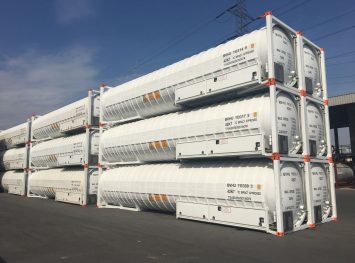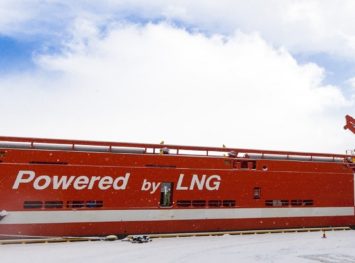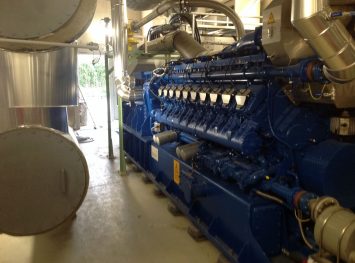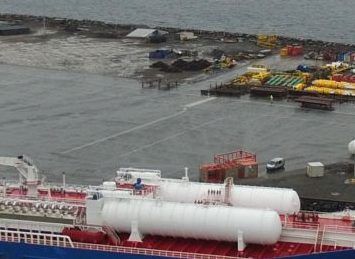
Ethylene
Ethylene production and application
Ethylene (C2H4) is the largest basic petrochemical and produced by the steam cracking of hydrocarbons (naphtha, ethane, LPG). In 2016, global production amounted to 147 million tons.
Ethylene is primarily used as chemical feed-stock for the production of polyethylene and ethylene oxide.
Ethylene also finds applications outside the chemical industry. For example ethylene is used for the ripening of fruits such as bananas. Another key application of ethylene is for the welding and cutting of metals as the combustion of ethylene results in very high flame temperatures.
Ethylene characteristics
At atmospheric conditions and ambient temperatures, Ethylene is gaseous and extremely flammable and gas air mixtures are explosive. Hence Ethylene is classified as a dangerous good. At cryogenic temperatures below -104 °C or 155 °F, Ethylene becomes a liquid. The compound has UN hazard class 2.1 with identification number UN1962 (gas) and UN1038 (refrigerated liquid). Please refer to the material safety data sheet (MSDS) of Ethylene for more details.
In liquid state its volume reduces 475 times allowing efficient intermodal transport. The density of liquid Ethylene at 1 bar is 568 kg/m3. Hence the payload of a typical 40ft cryogenic tank container is large than 20 ton.
Ethylene container transport
For most bulk applications, especially in the chemicals industry, Ethylene is mostly transported by pipeline.
However, for some applications ethylene is transported in its liquid form by ships, trailers and containers. An example of such an applications is ethylene supply for smaller batch chemical processes and as back-up feed-stock supply.
Please contact us for further details.




